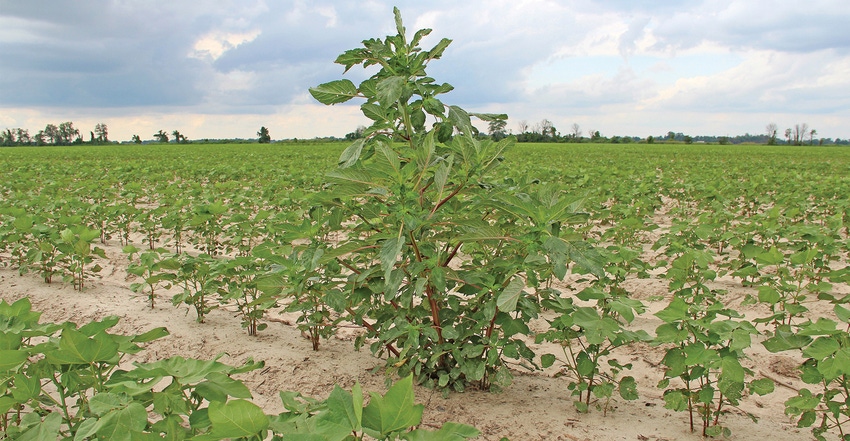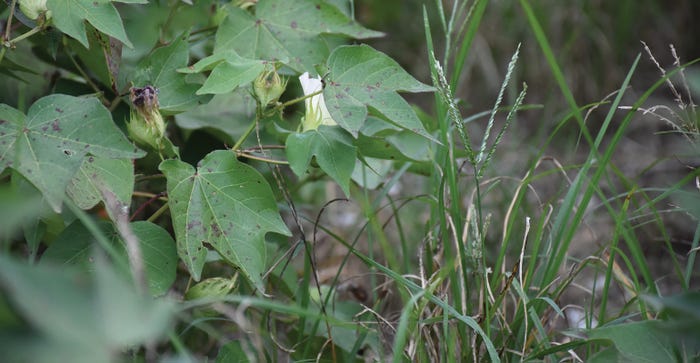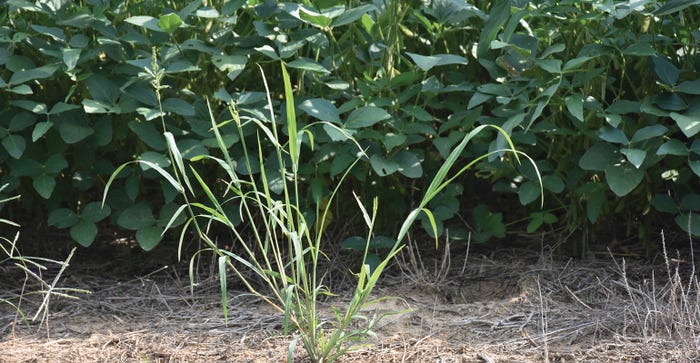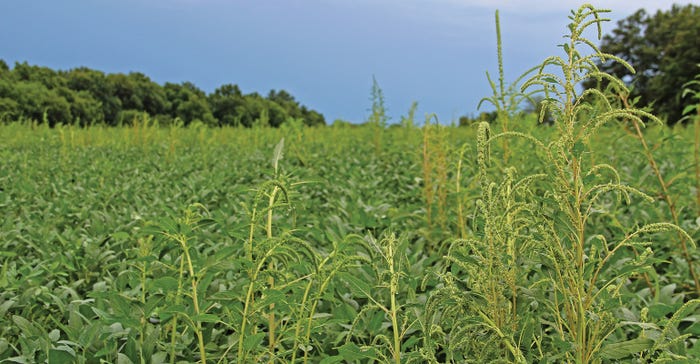November 1, 2021

Floods in the Mississippi Delta are not that unusual. For centuries heavy snows and rains in Midwest winters have pushed the Mississippi River out of its banks in the Midsouth in the spring.
But the storms that brought a near-record 19.22 inches of rain to the Rohwer Research Station in Desha County, Ark., and the surrounding area June 7 and 8 were local — and came at a time when spring floods are usually long gone.
“When you talk to the guys who have been around for a while, they had never seen anything like this,” said Tom Barber, Extension weed scientist with the University of Arkansas System Division of Agriculture. “I don’t know anywhere in the Delta that can handle that much rain in 24 to 48 hours without a bunch of stuff going under water.”
As growers finish harvesting their crops in southeast Arkansas and the central Mississippi Delta, most seem to have dealt with the catastrophic weather conditions of June and July remarkably well. In general, many lost corn acres were not replanted, soybeans were planted back to soybeans and cotton acres were on higher ground.
“A lot of the fields that were in corn were all but done,” said Jason Bond, Extension/research weed scientist with Mississippi State University. “Those fields were either fallowed or got replanted to soybeans. Most of the fields in beans were replanted to beans. The other issue was the rain event happened the second week of June, and the cutoff for dicamba applications was June 30.”
June seedlings
Mississippi farmers haven’t dealt with seedling soybeans in June recently because few acres in the Delta are double cropped now or planted that late for other reasons. Another challenge was the heat accumulation and how much faster the weeds emerged and grew in June and July than in mid-April.
“We had to modify our timings on some herbicides to account for the weed size, and I think we’ve done that successfully,” Bond said. “You drive around and look at those replanted fields, and, other than the growth stage, they look like good fields.”
So, what should growers be thinking about as they prepare for 2022, assuming they don’t receive 100-year floods two years in a row?
“I hope we don’t have to plan for extremes from here on out,” Barber said. “We get the ground worked as best we can and get ready to plant as early as possible because that planting date gets us out of the most intense weed pressure and helps us avoid heat during pollination.
“These early beans really do yield the best for the most part. I don’t think we change systems. What may force us to change is the amount of field work we have to do. You never know how much rain we may get in the spring. The amount of field work we have to do following harvest will set up the fall, winter and next spring.”
“My biggest concern for next year is the field prep,” Bond said. “We like to do stale seedbeds on most of our acres except for the sandiest ground. You go back to the fall of 2018 and 19, and the weather wasn’t conducive for field prep in the fall. We were just glad to get the crop out.

“Then we had a lot of field work to do in the spring of 2019 and 20, which set the planting dates further back than what we want. I foresee similar challenges this year when we’re having to wait for the lower ends of these fields that were partially replanted to be harvested.”
Degrees of difficulty
Depending on where they farm, Arkansas growers may face different degrees of difficulty in 2022.
“The areas east of Crowley’s Ridge, especially Mississippi, Crittenden and down into Phillips Counties are probably our worst pigweed areas,” said Barber. “That’s where we’ve been finding our multiple-resistant populations.
“Everywhere else, I think most people are happy with their weed control whether they’re using the XtendFlex (dicamba), Enlist (2.4-D) or Liberty (glufosinate) technologies. It’s those eastern counties where we seem to be losing control of pigweed every year.”
Regardless of the system, residual herbicides will continue to be extremely important. “I think all three of those could fail if we don’t put the residual out at planting and also overlap those residuals early on,” Barber said.

“If we can win the battle early and reduce those numbers, it’s a lot easier to manage the rest of the season. Any of those technologies could fail whether the pigweed is resistant to a herbicide or not if we fail to put the residual out there.”
When Arkansas moved the cutoff date for dicamba applications to June 30, some growers may have omitted their residual herbicides, knowing they would spray longer into the season.
“When they did that their first post applications weren’t as effective,” he noted. “They probably didn’t spray as early as they intended, and the pre’s weren’t there for protection. I would encourage everyone to continue with the residual program and not try to do it all with postemergence.”
Areas hit by the June floods could also have more weed seed because of the later emergence of problem weeds, Bond said. “Where a guy may have sprayed twice, he will only spray once; where he might have sprayed three times, he will spray twice.
“I can foresee having grass and pigweeds that mature and produce seed that will cause problems for next year’s crop and the years after that, depending on the dormancy level of those seeds.”
Weed control
Although they didn’t receive as much rain, Tennessee growers could also experience more problems controlling grasses and broadleaf weeds as they move into 2022.
“It’s two different stories,” said Larry Steckel, Extension weed specialist with the University of Tennessee. “One is the grass issues — barnyardgrass, jungle rice and goose grass. About 15% of the population is glyphosate resistant. We’re seeing control failures on grasses, in part, because of that resistance, but mostly due to dicamba being mixed with Roundup. The dicamba is hindering the Roundup.”
Farmers are adapting. “They’re applying Roundup alone or clethodim-Roundup a week or two later to pick up the grass. That’s working, but some are expecting Roundup-dicamba to give them good grass control, and it’s just not happening.”
The most alarming issue is that dicamba is struggling to control Palmer amaranth in numerous Tennessee counties.

“With the label rate of a half-pound of dicamba we’re seeing a lot of escapes,” he said. “Sometimes a second application of dicamba is cleaning it up; sometimes it’s not. The Palmer resistant to dicamba is also cross-resistant to 2,4-D, and it’s more spread out in 2021 than 2020.”
Steckel said the pigweed tends to grow sideways after it’s been sprayed. “They don’t die, the growth slows and being prone they’re a little harder to see from the pickup truck. A lot of folks assume they’re getting good weed control until early August. That’s when the calls have started coming in, and it’s a little too late to do anything.
“Next year we need to be more strategic in getting Liberty out there. With the XtendFlex crops you have the option of making a Liberty application very shortly after the dicamba application and pick up the escapes. In Enlist crops, you need to tank mix Enlist One with Liberty.”
Applying the maximum rates of residual herbicides at planting is also a must. “That was one of the bright spots on weed control this year,” he said.
One of the more interesting approaches was growers applying Zidua impregnated on fertilizer in cotton. “We did some of that in our research, and it worked well,” he noted. “You don’t burn the cotton like you do with Warrant, Dual and Outlook. That was one of the most effective herbicides we tried, plus you’re not tying up a sprayer. The sprayer can be making more timely applications of postemergence herbicides.”
Because the leaves weren’t burned the cotton canopied two to three days earlier than fields that did not receive the treatment. “I’ve about given up trying to get anybody to use a hood and run a layby rig,” he said. “This is about as close to a layby as you’ll get for some growers.”
About the Author(s)
You May Also Like






